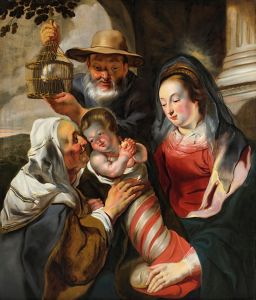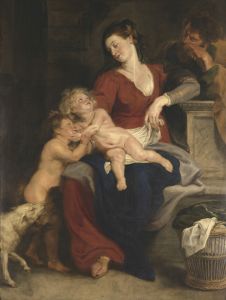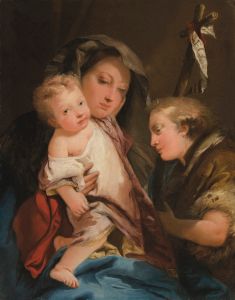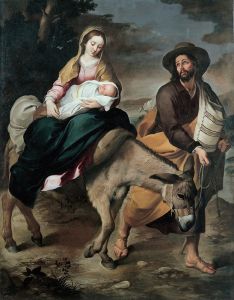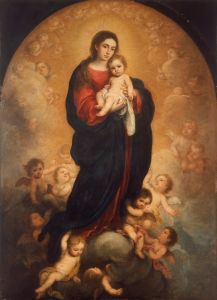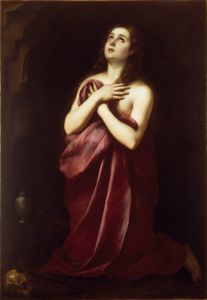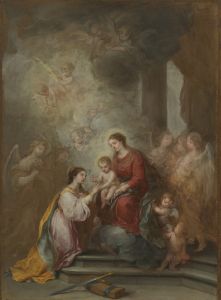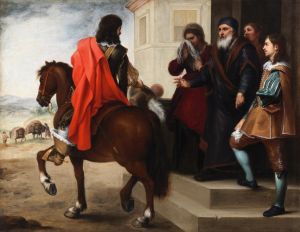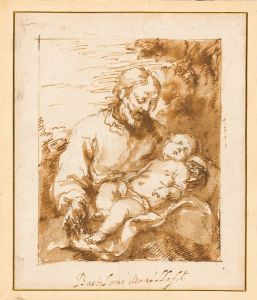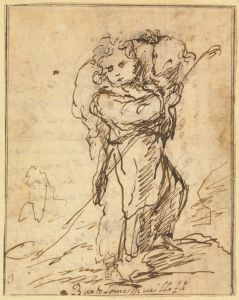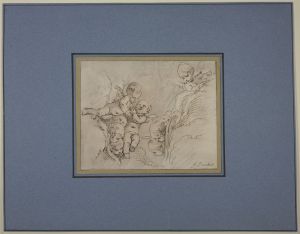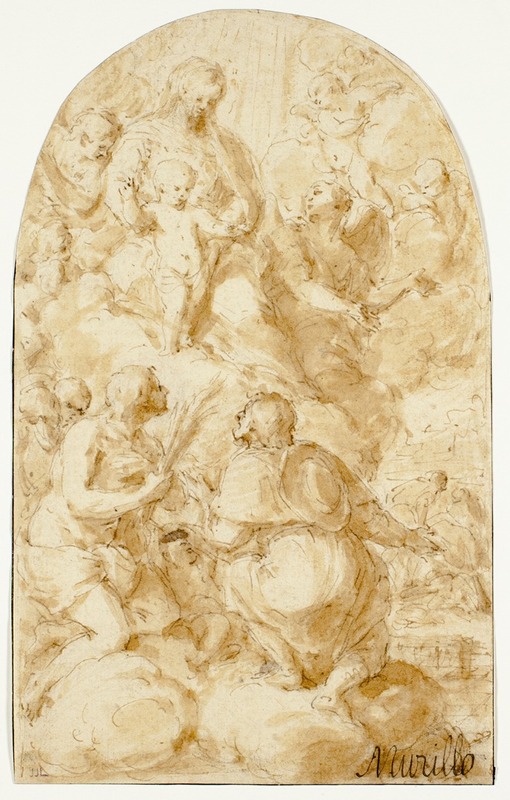
Virgin Mary with the Christ Child in the Clouds
A hand-painted replica of Bartolomé Estebán Murillo’s masterpiece Virgin Mary with the Christ Child in the Clouds, meticulously crafted by professional artists to capture the true essence of the original. Each piece is created with museum-quality canvas and rare mineral pigments, carefully painted by experienced artists with delicate brushstrokes and rich, layered colors to perfectly recreate the texture of the original artwork. Unlike machine-printed reproductions, this hand-painted version brings the painting to life, infused with the artist’s emotions and skill in every stroke. Whether for personal collection or home decoration, it instantly elevates the artistic atmosphere of any space.
Bartolomé Esteban Murillo was a prominent Spanish Baroque painter known for his religious works, genre scenes, and portraits. One of his notable works is "Virgin Mary with the Christ Child in the Clouds," which exemplifies his skill in portraying religious themes with warmth and accessibility.
Murillo was born in Seville in 1617 and spent most of his life there, becoming one of the leading figures of the Sevillian school of painting. His works are characterized by their soft, luminous quality and the tender, humanized depiction of religious figures, which made them highly popular during his lifetime and beyond.
"Virgin Mary with the Christ Child in the Clouds" is a fine example of Murillo's ability to convey the divine in a relatable and intimate manner. The painting depicts the Virgin Mary holding the Christ Child, both figures enveloped in clouds, suggesting their heavenly nature. Murillo's use of light and color creates a serene and ethereal atmosphere, drawing the viewer into the spiritual realm he so masterfully depicted.
The Virgin Mary is often portrayed with a gentle and compassionate expression, embodying the ideal of maternal love and purity. The Christ Child, depicted with innocence and grace, reaches out to the viewer, symbolizing the connection between the divine and humanity. Murillo's skillful use of chiaroscuro enhances the three-dimensionality of the figures, giving them a lifelike presence that was highly admired in his time.
Murillo's religious paintings were deeply influenced by the Counter-Reformation, which emphasized the importance of art in inspiring devotion and conveying religious truths. His works often reflect the Catholic Church's desire to make religious figures more accessible and relatable to the faithful. This approach is evident in "Virgin Mary with the Christ Child in the Clouds," where the divine figures are depicted with warmth and humanity, inviting contemplation and veneration.
The painting is also notable for its composition, with the figures positioned in a way that creates a harmonious balance. The use of clouds not only signifies the heavenly realm but also serves as a compositional device that frames the figures and enhances their divine nature. Murillo's attention to detail, from the delicate rendering of the Virgin's garments to the soft curls of the Christ Child's hair, demonstrates his technical proficiency and artistic sensitivity.
Murillo's influence extended beyond his lifetime, impacting both Spanish and European art. His works were widely collected and admired, and his style influenced later artists who sought to capture the same warmth and humanity in their religious paintings. "Virgin Mary with the Christ Child in the Clouds" remains a testament to Murillo's ability to blend the divine with the human, creating works that continue to inspire and move viewers centuries after they were painted.
In summary, "Virgin Mary with the Christ Child in the Clouds" by Bartolomé Esteban Murillo is a quintessential example of his religious art, characterized by its tender depiction of sacred figures, masterful use of light and color, and its ability to convey deep spiritual themes in an accessible manner.





